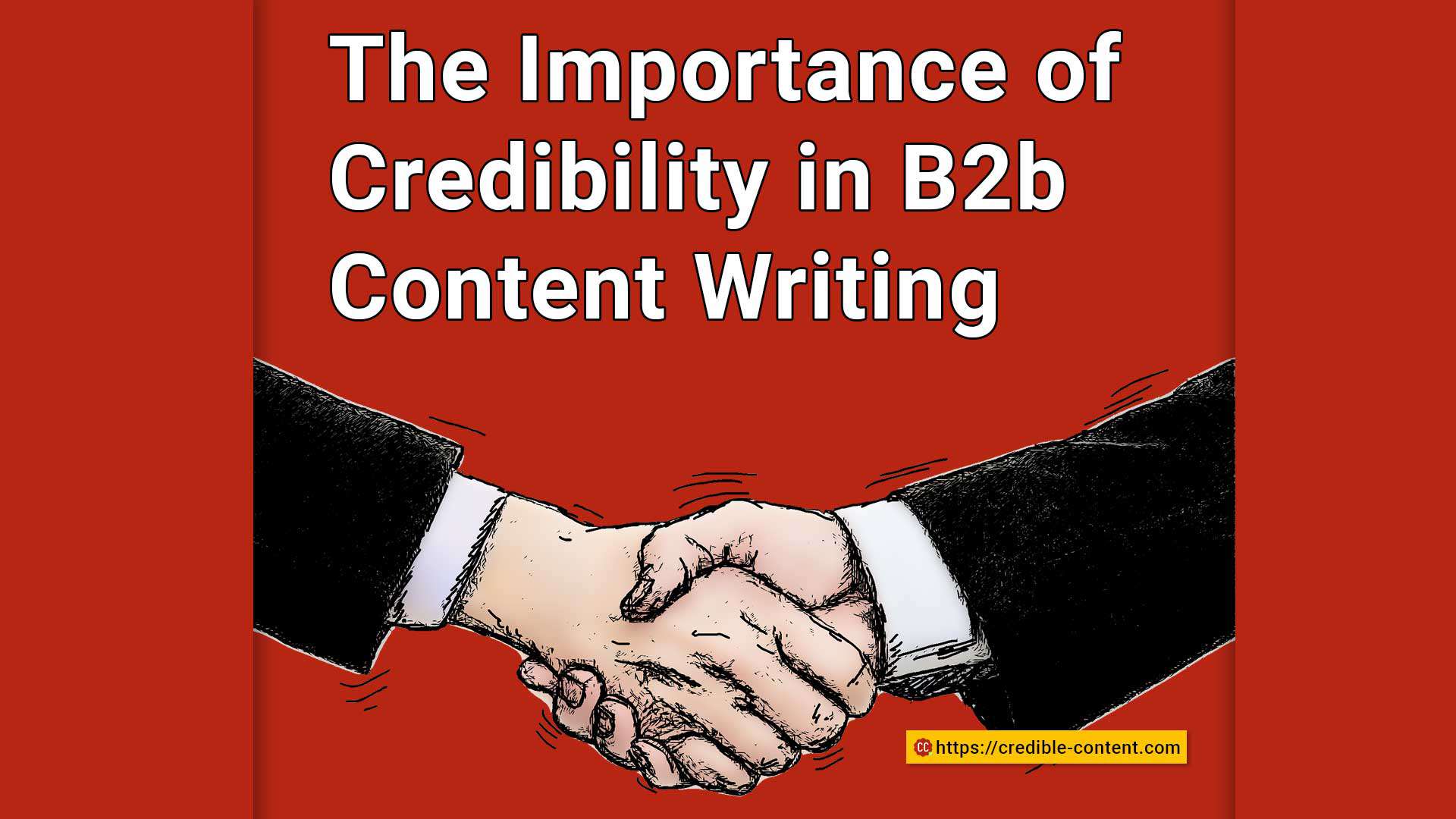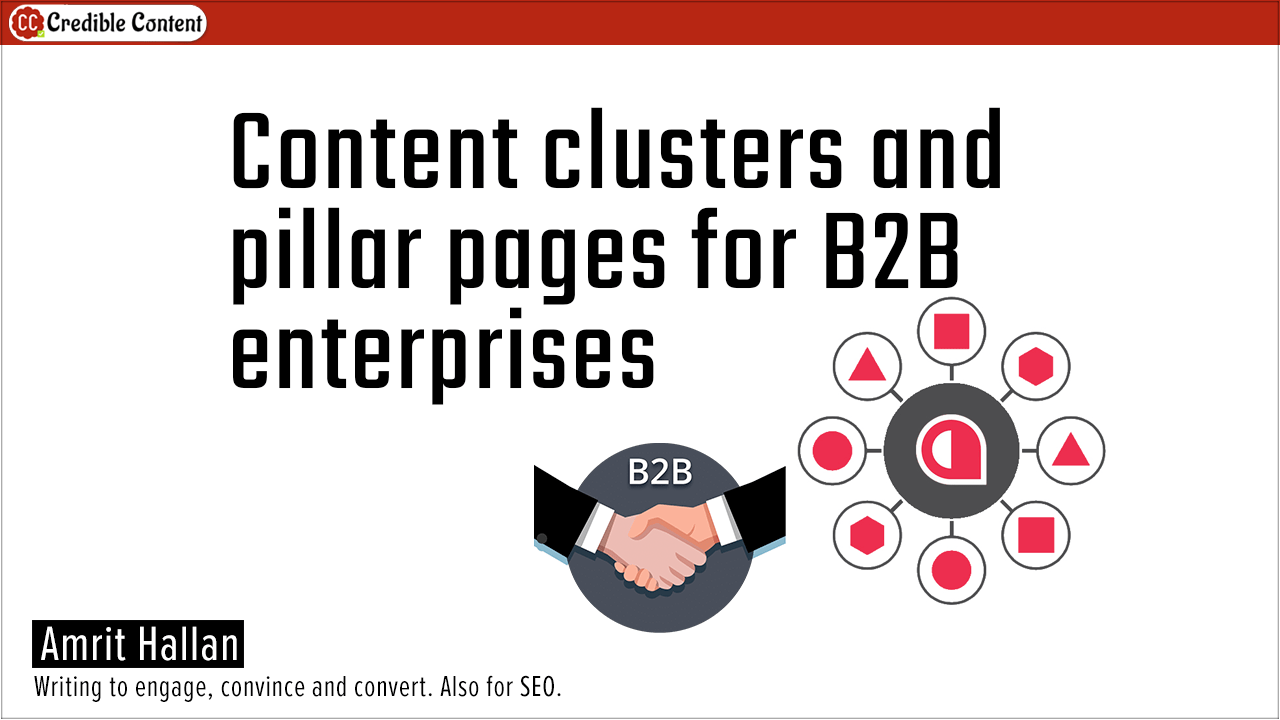
The importance of credibility in B2B content writing.
B2B content writing is all about establishing your credibility. Your business partners need information they can trust.
On your website and blog, you can write anything, and you can claim anything. Unless the information that you present is backed with evidence, it doesn’t make much of an impact.
Credibility comes with proof.
Credibility comes when you show up regularly.
One sure shot way of presenting proof is publishing lots of case studies and testimonials on your website that showcase what you have achieved for your customers and clients.
Another way is, sharing your knowledge and wisdom on an ongoing basis.
“Ongoing basis” is very important if you want to establish your credibility as a B2B entity.
What does credible content writing for B2B mean?
What does credibility mean? It means the degree of trust that people have in you.
It is difficult to establish trust unless you actually work with someone but then, there is always the first time – the first time you need to work with someone. How do you establish trust if you haven’t yet worked with someone?
For a few months I have been charging full advance from my clients. This happened when, in the aftermath of the Covid-19 outbreak, many clients simply vanished. I had spent weeks working on their assignments and then suddenly, they dropped their projects and expressed their helplessness when I asked for even partial payments.
Since then, I’ve been asking a full advance. It’s the presence of my website and my blog that reassures them. It’s the credibility my persistent content publishing has been able to establish that makes them agree to this precondition.
As I have already mentioned above, one way is, publishing lots of case studies (in which you explain how you have actually solved problems of your customers and clients) and testimonials.
There may be some compulsions when you cannot share testimonials. For example, when I write for some clients, they want me to keep it secret that I’m writing for them because they publish the content on their name, especially when they’re publishing the content on niche websites and blogs to establish their own credibility.
I mostly serve B2B industries. I write content for websites and blogs and that in turn, generates more business for people. I’m always writing for businesses. Even when I write for individuals, they intend to use my content writing and copywriting services to get more business.
I get lots of business because of the content that I’m constantly publishing on my website and Credible Content Blog. Regularly publishing content related to content writing, copywriting and content marketing helps me maintain higher search engine rankings and this in turn makes it easier for my prospective clients to find me and hire me.
How do establish my own credibility?
In many cases, just the fact that my clients can find my website on search engines (something that they want to achieve for their own websites and blogs) reassures them that I can achieve the similar feat for their websites.
Another thing is, they can check that I have been publishing content for years. It tells them, I have a serious business. I maintain my visibility. I’m constantly sharing my knowledge and experience through my blog. I publish a newsletter. There are no negative reviews about my services on the Internet.
What else can be done to establish your credibility as a B2B entity? TopRank Marketing has recently published a blog post that shares some useful tips on establishing your credibility as a B2B enterprise. Here they are:
Always be truthful when you are presenting information on your website
Many people will tell you that what’s true, is subjective. When my clients give me information and then I use that information to present their case convincingly, I assume that the information that they are giving me, is truthful. I assume that they don’t want to publish lies on their website.
Consequently, I always have a problem when they ask me to write testimonials. On multiple occasions I have turned up with their requests for writing testimonials. I can be creative with truth, sometimes they tell me.
Although I cannot question my clients on the information that they provide me, I draw a line when they ask me to write testimonials from scratch.
It is fine to be truthful even if you have not yet done lots of work for your clients. Really, clients will appreciate this.
Associate with people who have already established their credibility
I’m not suggesting you latch onto them and neither does the above-mentioned blog post. What it means is, people who have already established their credibility, will only allow you proximity if they find you credible.
When your prospective customers and clients see you regularly interacting with people who have already established their credibility through hard work and ingenuity, 2 things happen: they easily discover you because people who have already established their credibility have a greater reach, and, some of their credibility rubs off to you.
How do you associate with people who are already authority figures in your industry?
Leave comments on their blogs. Share their content on your own blog with your own, original take. Share their content on your social media timeline. Participate in discussions.
Again, regularity is very important.
Make sure that your prospective customers and clients can find your content on right places
If most of your clients are on LinkedIn, it doesn’t make sense to focus on Instagram or Facebook. Similarly, if most of your audience spends its time on Facebook, you shouldn’t expend much energy on LinkedIn.
For B2B enterprises, it is primarily LinkedIn because it is a professional network where people are already looking for business partnerships.
Highlight the purpose of your brand
The concept of branding in itself is a purpose. People recognize your brand not because of your logo, but the purpose and the attitude that it carries. The brand purpose is the reason for your business to exist beyond making money.
As a content writer, I aspire to help you grow your business and spread your ideas when you hire me. Writing is a tool. Just like a sculptor uses chisel and hammer to carve out shapes out of rocks, I use words to create compelling messages for your business. That’s my branding message for Credible Content.
Having a very clear brand message can help you establish your credibility and trustworthiness.
Get involved with the community
Active participation in your community also enhances your credibility. Are you here just to make money or do you also want to make a positive contribution where it matters? I’m not suggesting that from a businessperson you turn into an activist, but whenever it’s possible, get involved in causes and campaigns that affect your customers and clients. Take a stand. Help people wherever you can.
Be consistent with your marketing message
Content marketing is a persistent activity. Not just because it helps you maintain your visibility, it’s also because your competitors are constantly trying to outdo you in terms of promoting themselves and publishing fresh content.
Even if you enjoy brand loyalty if you don’t maintain your visibility through fresh content, people begin to spend time consuming content from other brands. No matter how much emotional attachment you enjoy with your customers and clients, if your marketing message is not persistent, you’re going to lose the attention of your target audience and consequently, it negatively impacts your credibility.
Building credibility for your B2B enterprise is same as building your personal reputation. How do you build your personal reputation? By your conduct. By your values. By the services that you deliver. By the experience people have when they associate with you. The same applies to your business.




